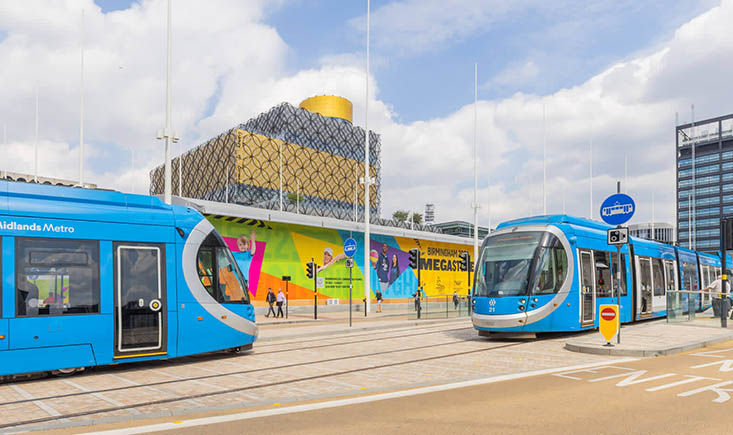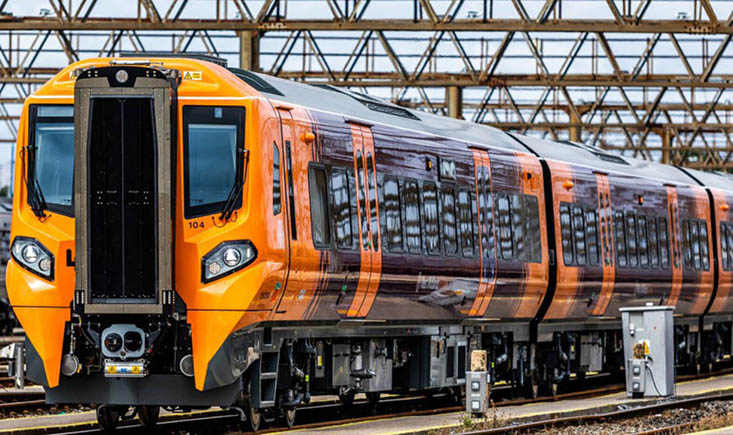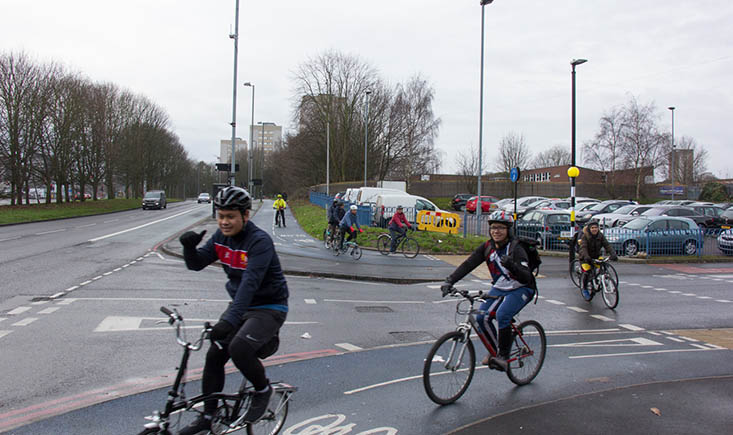
Getting Around Birmingham: Transportation Tips for Tourists
Travel TipsWhen I first arrived in Birmingham, I knew it was a city brimming with history, culture, and an intriguing blend of old and new. However, navigating an unfamiliar city can be a challenge, so I set out to learn the best ways to get around. Whether you’re exploring the historic city center, heading to the outskirts, or planning day trips, Birmingham offers a variety of transportation options to suit every travel style and budget.
1. Walking: The Best Way to See the Sights Up Close
Birmingham’s city center is incredibly walkable, and for a visitor like me, walking was the perfect way to take in the sights at a relaxed pace. The main attractions, such as the Birmingham Museum and Art Gallery, the Bullring Shopping Centre, and the beautiful canals, are all within reasonable walking distance from one another.
Why Walk?
Walking around Birmingham allowed me to explore hidden alleys, discover charming cafes, and take in the city’s remarkable architecture. If you enjoy photography, this is a great way to capture street art and historic buildings up close. Most of the key attractions are clustered together, which makes it easy to explore on foot without the hassle of public transport or parking.
My Tip:
Bring comfortable walking shoes and, if possible, a weatherproof jacket. Birmingham weather can be unpredictable, and the last thing you want is to be caught in a drizzle unprepared. You can also pick up a tourist map from the visitor center in Victoria Square, which helped me navigate the city with ease.
2. Public Buses: An Affordable Way to Travel
Birmingham has an extensive bus network operated mainly by National Express West Midlands. These buses were my go-to choice for longer distances, especially when I wanted to venture out of the city center. With frequent services covering all major areas and beyond, buses are both affordable and accessible.
How to Use the Buses:
- Tickets: I found it convenient to get a day ticket, which costs around £4.60 and allows unlimited travel on National Express buses throughout the day. Single journeys are about £2.40. You can purchase tickets directly from the driver with cash or, even better, use the Swift card or the mTicket app for a faster boarding experience.
- Routes: The most useful routes for tourists include the No. 9 to Hagley Road (great for reaching the Botanical Gardens), the No. 50 to Moseley and Kings Heath (a vibrant area for live music and dining), and the No. 35 for the Jewelry Quarter.
My Tip:
Download the Network West Midlands app, which offers a real-time bus tracker, route maps, and timetable updates. This app was invaluable when I needed to check the next bus or find a specific stop. Also, keep in mind that bus drivers are usually friendly and willing to help with directions if you’re unsure about where to get off.
3. Trains: Quick and Convenient for Nearby Destinations
Birmingham is well-connected by train to surrounding towns and cities. Since I planned a few day trips, I found trains to be fast, efficient, and more comfortable for longer journeys. The main train stations are Birmingham New Street, Snow Hill, and Moor Street, each serving different lines and routes.

How to Use the Trains:
- Tickets: I booked tickets through the Trainline app, which not only allows you to compare prices but also offers e-tickets for convenient boarding. Advance tickets can save you money, and I recommend purchasing a Railcard (if you’re eligible) for discounts.
- Routes: For short trips within Birmingham, the West Midlands Railway services are your best bet. I took the local trains to Sutton Coldfield for a day at Sutton Park, and Solihull, which has a great shopping scene and lovely parks.
My Tip:
Birmingham New Street Station is huge, so allow some extra time to navigate it if it’s your first time there. Additionally, check out the West Midlands Day Ranger ticket, which allows unlimited travel on trains and trams in the region for around £6.80 on weekends. This is perfect if you’re planning multiple trips in one day.
4. The West Midlands Metro: A Smooth Ride to the Suburbs
The tram network in Birmingham, known as the West Midlands Metro, is an excellent option if you’re heading toward Wolverhampton or exploring areas like the Jewellery Quarter. With frequent services and modern trams, the Metro provides a comfortable ride.
How to Use the Metro:
- Tickets: A single ticket costs around £2.40, while an all-day pass is approximately £5. I found it easiest to pay with contactless directly on the tram, but you can also use the Swift card for discounted travel.
- Routes: I took the tram from Grand Central (connected to Birmingham New Street) to Wednesbury Parkway. The tram stops at popular spots like St. Paul’s Square and the Jewellery Quarter, which made it easy to hop off and explore.
My Tip:
The Metro also runs late into the evening, so it’s a safe and reliable option if you’re out enjoying Birmingham’s nightlife. Plan your journey with the West Midlands Metro website or app to see the latest schedules and maintenance updates.
5. Cycling: A Fun and Eco-Friendly Way to Explore
One of the highlights of my Birmingham trip was renting a bike and exploring the city’s canals and green spaces. The city has invested in creating more bike lanes, and the flat terrain makes it ideal for cycling. West Midlands Cycle Hire offers bikes for rent at various stations around the city, so you can pick up and drop off bikes wherever is convenient.

How to Rent a Bike:
- Process: Download the Beryl app to rent a bike. Rates start at £1 to unlock the bike, then about 5p per minute after that. Helmets are recommended, but you’ll need to bring your own as they aren’t provided.
- Routes: I recommend riding along the Birmingham Canal Old Line—it’s scenic and avoids most road traffic. Sutton Park and Cannon Hill Park also have bike-friendly trails, offering a nice escape from the hustle and bustle of the city center.
My Tip:
If you’re planning a longer ride, pack some snacks and water, especially if you’re cycling to parks or nature spots. Many locals use the canal paths, so stay aware of your surroundings and be prepared to share the paths with both pedestrians and other cyclists.
6. Taxis and Ride-Sharing: Convenient but Pricier Options
While I mostly used public transportation, there were times when I needed a faster and more direct way to get around. Taxis and ride-sharing services like Uber and Bolt are widely available in Birmingham and can be handy for trips late at night or when public transport isn’t running.
How to Use Taxis and Ride-Sharing:
- Local Taxis: You can find black cabs around the city center or at designated taxi ranks, particularly near the train stations. These taxis are metered, and prices are standard across the board.
- Ride-Sharing Apps: Uber is the most popular app in Birmingham, and I found it easy to book a ride within minutes. Bolt is a good alternative, often with competitive prices. During peak hours or events, fares can increase, so plan accordingly.
My Tip:
Use ride-sharing apps during off-peak hours to avoid surge pricing. If you’re traveling with a group, this can also be a cost-effective option compared to public transport.
Navigating Birmingham’s diverse transportation network was surprisingly easy and enjoyable. Whether I was walking through the historic quarters, riding the Metro, or cycling along scenic paths, each mode of transportation offered its unique perspective on the city. With plenty of options to choose from, I found that exploring Birmingham was not only convenient but also enriching.
You may also like
Recent Posts
- Antiquing Through Time in Dundee: A Wanderer’s Chronicle
- Seaside Delights: Discovering Dundee’s Finest Seafood Restaurants
- A Taste of True Scotland: Discovering Authentic Flavors in Dundee
- Hiking and Nature: The Best Outdoor Activities in Dundee
- A Museum Trail Through Dundee: From V&A to The McManus

Leave a Reply